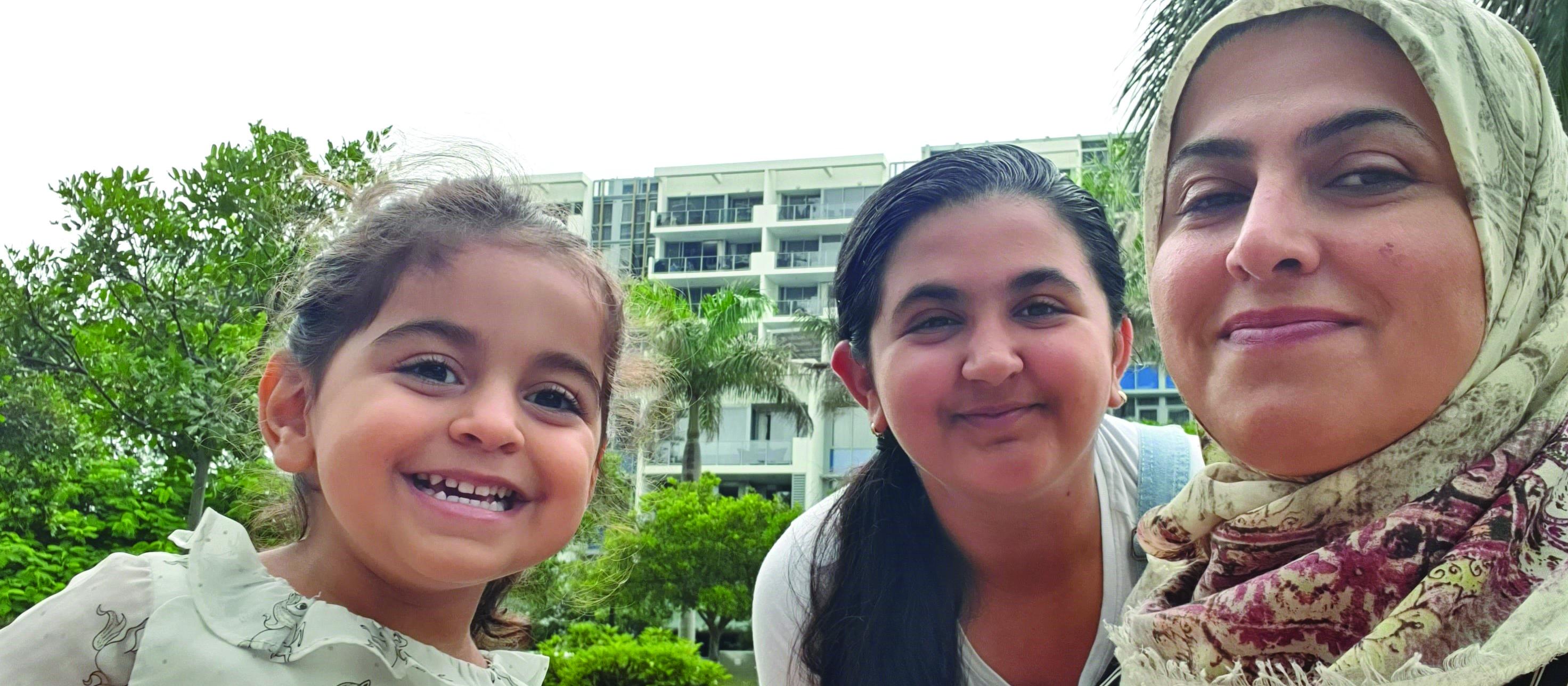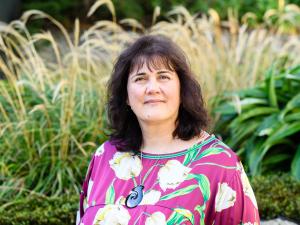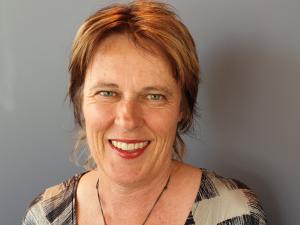Respiratory physician Lutz Beckert considers chronic obstructive pulmonary disease management, including the prevention of COPD, the importance of smoking cessation and pulmonary rehabilitation, and the lifesaving potential of addressing treatable traits. He also discusses the logic of inhaler therapy, moving from single therapy to dual and triple therapy when indicated, as well as other aspects of management
A career that can go from daunting to delighting: The community midwife
A career that can go from daunting to delighting: The community midwife

We are on our summer break and the editorial office is closed until 17 January. In the meantime, please enjoy our Summer Hiatus series, an eclectic mix from our news and clinical archives and articles from The Conversation throughout the year. This article was first published in the 17 March
Zahra Shahtahmasebi checks out the lives and livelihoods of the midwives not employed by DHBs or hospitals
- Community midwives are sole traders contracted directly to the Ministry of Health. They are paid through the Maternity Services Notice under Section 88 of the New Zealand Public Health and Disability Act 2000.
- Many midwives practise in small groups, so they can share equipment and clinic rent, and provide back-up to one another.
- The New Zealand College of Midwives has been calling for fair pay for midwives as well as a new contract. The college has been in discussions with the Ministry of Health since 2015.
Community midwifery is a complex business, where it can be challenging to get established and stay afloat, says New Zealand College of Midwives chief executive Alison Eddy.
From the moment they graduate, community midwives go it alone, Ms Eddy says.
Being a self-employed sole trader supporting women on a critical, intensely personal and sometimes risky journey might feel daunting.
But these midwives also work under a contracting arrangement that’s deemed out of date.
Midwifery and Maternity Providers Organisation executive director Wayne Robertson says the original notice governing their work was most likely designed for straightforward cases involving well women.
“But over time, changes in complexity mean what was right then is now definitely not,” Mr Robertson says.
Community midwives are lead maternity carers (LMCs) who contract directly with the Ministry of Health. They claim remuneration through the Maternity Services Notice under Section 88 of the New Zealand Public Health and Disability Act 2000.
Payment comes in automatic lump sums: at 28 weeks; after the labour and birth; and at discharge when the baby is a month old.
Looking after about 40 women a year will earn a midwife approximately $53,000 after expenses, according to the Careers website.
Typically, a heavy caseload consists of about five to six women birthing a month, or about 60 a year.
Ms Eddy says the contract model has both pros and cons.
Self-employment allows for autonomy and flexibility, but the associated costs are significant and current funding is inadequate for the work midwives actually do, she says.
Lump-sum payments are also heavily weighted towards labour and birth, which means most LMCs start working before actually receiving any income.
Midwives fresh from a three-to-four-year degree struggle to cope with this. Most have student debt. “They are not likely to have a lot of spare cash.”
Since 2015, the New Zealand College of Midwives has been in discussions with the ministry towards an updated contract arrangement that will recognise and reimburse extra work.
The Section 88 Notice is also under review and proposed changes include more timely payments, especially in the first trimester.
Mr Robinson says the consultation with the ministry needs to deal with the extra complexity of today’s mothers-to-be. “The funding needs to be flexible and follow the woman.”
The provider organisation, set up by the college in 1997, aims to make business processes as easy as possible, as well as providing LMCs with a supportive practice management system.
West Auckland midwife Shweta Kumar says the lump sum payment at 28 weeks – $398.50 – fails to take into account the work that goes into caring for the woman at this time, including any emergency assessments, or added emotional support.
“Your client might have recently lost a family member, or they’re struggling with work, or their partner has lost their job. They already have other young children and you’re trying to organise food packages for them.
“You’re going to be doing frequent visits, because you don’t want any of your clients to fall off the cliff. Sometimes us midwives are the only professional they may seek help from.”
South Auckland midwife Fateme Moloodi says LMCs incur significant costs getting ready to practice before payment arrives.
“You have to buy all of the clinical equipment, set up your caseload, pay rent for the clinic. So much of it comes from your own pocket.”
What keeps Ms Moloodi in her job is the privilege of sharing each individual birth experience.
Ms Kumar, who graduated a year ago, says she faced plenty of expenses and administrative tasks, including life insurance, and her annual practising certificate.
“As a student, that takes a few thousand [dollars] off you. You’re always thinking, what next? What process do I have to complete now, like getting set up with Labtests or radiology?”
Aware of this reality while studying, Ms Kumar signed up to attend home births as a second midwife so she could prepare herself for the next steps.
Mr Robertson says a series of national workshops in 2017 revealed that midwifery students were not being equipped with the business knowledge they needed.
Since then, Mr Robertson says, the providers’ organisation has helped set up numerous midwives with online accounting software Xero, cost-effective group equipment insurance schemes, and a new app, Tiaki. This provides practice management support and aims to replicate physical diaries.
In the app, midwives can send and receive digital referrals, set up their personalised calendar, send texts, and perform video consults, using a platform called Whereby, similar to Zoom.
A measure of success for community midwifery, Mr Robertson says, would be to see LMCs fairly and reasonably paid, as well as having easy access to both practice and business supports.
“If this was any other business, it wouldn’t exist or would be bankrupt. It’s the strong sense of purpose…and a large number of midwives have children. That personal experience is why it has sustained.”
Even though LMCs are individually contracted, Ms Eddy says their strength comes through teamwork.
Every LMC has a back-up, another midwife who can provide 24/7 cover to their caseload, in case they’re sick, on leave, or attending the birth of another client.
Usually a small group of midwives will form a practice together, and share clinic space and equipment.
Ms Eddy says strong professional relationships are probably the key ingredient to establishing a successful midwifery business.
Finding colleagues who share the same ethos and philosophy is crucial, she adds.
Christchurch-based midwife Violet Clapham says this tends to happen organically, when student midwives go on clinical placements in their final year.
“They form relationships, which often evolves into an offer to join that group.”
As a student, Ms Moloodi was placed with experienced midwife Anne Whyte at LMC Services in Papatoetoe, Auckland. A fellow student who shared the same placement later became her back-up.
“Our philosophies all seemed to match; we could understand each other. So, I held on to them, and we’ve been practising together ever since.”
LMC Services is a group practice of about 22 midwives based in a clinic at Hunter’s Corner.
Chief executive Tony Mansfield says the company provides the clinical facilities for rent, as well as business and emotional support. When a team member goes on leave, the others swing in to share out the workload.
“It’s a supportive collective,” Mr Mansfield says. “We help them if they’re struggling with their paperwork, and there’s always someone to come to for a quiet confidential chat.
“We look after the midwives, so they can look after women and their babies.”
Ms Clapham emphasises that joining an established group, which already has a reputation and receives referrals, helps a midwife develop a caseload.
Personal recommendation is key to building a reputation, with social media playing a greater role in recent years.
“It takes time to build,” Ms Clapham says, “but then it snowballs, which can be challenging if you’re practising in an area where there is a shortage and there’s 100 women for one midwife.”
She points out that community midwives, unlike their peers in hospital, have no overt career pathway to follow.
“It’s more linear, there’s no hierarchy.
“All LMCs have the same income-earning ability. An LMC is an LMC whether they’ve been one for 20 years or one week.”
Midwives can, however, add more “feathers” to their caps by mentoring new graduates or completing a masters degree or doctorate.
We're publishing this article as a FREE READ so it is FREE to read and EASY to share more widely. Please support us and our journalism –subscribe here









![Barbara Fountain, editor of New Zealand Doctor Rata Aotearoa, and Paul Hutchison, GP and senior medical clinician at Tāmaki Health [Image: Simon Maude]](/sites/default/files/styles/thumbnail_cropped_100/public/2025-03/Barbara%20Fountain%2C%20editor%20of%20New%20Zealand%20Doctor%20Rata%20Aotearoa%2C%20and%20Paul%20Hutchison%2C%20GP%20and%20senior%20medical%20clinician%20at%20T%C4%81maki%20Health%20CR%20Simon%20Maude.jpg?itok=-HbQ1EYA)
![Lori Peters, NP and advanced health improvement practitioner at Mahitahi Hauora, and Jasper Nacilla, NP at The Terrace Medical Centre in Wellington [Image: Simon Maude]](/sites/default/files/styles/thumbnail_cropped_100/public/2025-03/2.%20Lori%20Peters%2C%20NP%20and%20advanced%20HIP%20at%20Mahitahi%20Hauora%2C%20and%20Jasper%20Nacilla%2C%20NP%20at%20The%20Terrace%20Medical%20Centre%20in%20Wellington%20CR%20Simon%20Maude.jpg?itok=sUfbsSF1)
![Ministry of Social Development health and disability coordinator Liz Williams, regional health advisors Mary Mojel and Larah Takarangi, and health and disability coordinators Rebecca Staunton and Myint Than Htut [Image: Simon Maude]](/sites/default/files/styles/thumbnail_cropped_100/public/2025-03/3.%20Ministry%20of%20Social%20Development%27s%20Liz%20Williams%2C%20Mary%20Mojel%2C%20Larah%20Takarangi%2C%20Rebecca%20Staunton%20and%20Myint%20Than%20Htut%20CR%20Simon%20Maude.jpg?itok=9ceOujzC)
![Locum GP Helen Fisher, with Te Kuiti Medical Centre NP Bridget Woodney [Image: Simon Maude]](/sites/default/files/styles/thumbnail_cropped_100/public/2025-03/4.%20Locum%20GP%20Helen%20Fisher%2C%20with%20Te%20Kuiti%20Medical%20Centre%20NP%20Bridget%20Woodney%20CR%20Simon%20Maude.jpg?itok=TJeODetm)
![Ruby Faulkner, GPEP2, with David Small, GPEP3 from The Doctors Greenmeadows in Napier [Image: Simon Maude]](/sites/default/files/styles/thumbnail_cropped_100/public/2025-03/5.%20Ruby%20Faulkner%2C%20GPEP2%2C%20with%20David%20Small%2C%20GPEP3%20from%20The%20Doctors%20Greenmeadows%20in%20Napier%20CR%20Simon%20Maude.jpg?itok=B0u4wsIs)
![Rochelle Langton and Libby Thomas, marketing advisors at the Medical Protection Society [Image: Simon Maude]](/sites/default/files/styles/thumbnail_cropped_100/public/2025-03/6.%20Rochelle%20Langton%20and%20Libby%20Thomas%2C%20marketing%20advisors%20at%20the%20Medical%20Protection%20Society%20CR%20Simon%20Maude.jpg?itok=r52_Cf74)
![Specialist GP Lucy Gibberd, medical advisor at MPS, and Zara Bolam, urgent-care specialist at The Nest Health Centre in Inglewood [Image: Simon Maude]](/sites/default/files/styles/thumbnail_cropped_100/public/2025-03/7.%20Specialist%20GP%20Lucy%20Gibberd%2C%20medical%20advisor%20at%20MPS%2C%20and%20Zara%20Bolam%2C%20urgent-care%20specialist%20at%20The%20Nest%20Health%20Centre%20in%20Inglewood%20CR%20Simon%20Maude.jpg?itok=z8eVoBU3)
![Olivia Blackmore and Trudee Sharp, NPs at Gore Health Centre, and Gaylene Hastie, NP at Queenstown Medical Centre [Image: Simon Maude]](/sites/default/files/styles/thumbnail_cropped_100/public/2025-03/8.%20Olivia%20Blackmore%20and%20Trudee%20Sharp%2C%20NPs%20at%20Gore%20Health%20Centre%2C%20and%20Gaylene%20Hastie%2C%20NP%20at%20Queenstown%20Medical%20Centre%20CR%20Simon%20Maude.jpg?itok=Z6u9d0XH)
![Mary Toloa, specialist GP at Porirua and Union Community Health Service in Wellington, Mara Coler, clinical pharmacist at Tū Ora Compass Health, and Bhavna Mistry, specialist GP at Porirua and Union Community Health Service [Image: Simon Maude]](/sites/default/files/styles/thumbnail_cropped_100/public/2025-03/9.%20Mary%20Toloa%2C%20Porirua%20and%20Union%20Community%20Health%20Service%20in%20Wellington%2C%20Mara%20Coler%2C%20T%C5%AB%20Ora%20Compass%20Health%2C%20and%20Bhavna%20Mistry%2C%20PUCHS%20CR%20Simon%20Maude.jpg?itok=kpChr0cc)